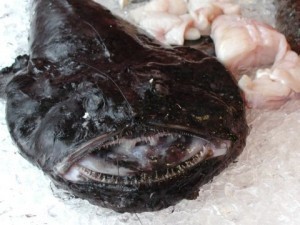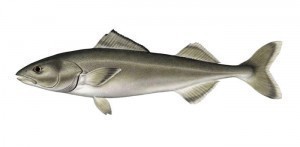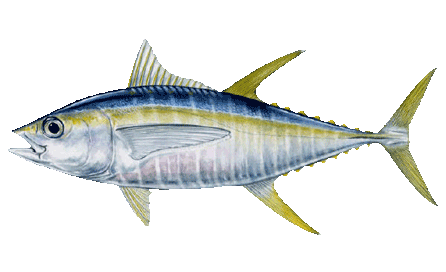Monkfish Sizes
The size of the monkfish can reach lengths of 5 ft (1.5 m), but the  average is 3 ft (1 m). The biggest specimen on record weighs 219 lbs (99.4 kg). It is also known as the headfish.
average is 3 ft (1 m). The biggest specimen on record weighs 219 lbs (99.4 kg). It is also known as the headfish.
Definition
The name is used for several kinds of fish living in the ocean. This includes the angelshark genus Squatina and the anglerfish genus Lophius. The term is also used for a sea creature known as the sea monk.
It should be noted that the use of monkfish for the Lophius genus is mainly in the northwest Atlantic. At the US east coast, the term is equal to goosefish. For this reason, the size of the monkfish can be difficult to determine sometimes.
Physical Characteristics
The Lophius is equipped with three filaments emanating from the center of its head. These are actually spines of the frontal dorsal fin. Just like in other anglerfish variants, the first filament is the lengthiest.
The filament ends in an unusual flesh form called the esca. Its fin ray can be moved in various directions. The unusual appearance of the esca draws the attention of prey. The monkfish can use this feature to distract its prey before attacking them.
Research however, indicates that the monkfish’s jaws will spring to action the moment the esca is touched. This holds true whether or not the fish wants to use it as bait.
In Europe, two species of Lophius are identified as monkfish. They are the Lophius budegassa and Lophius piscatorius. The latter is more widespread. It is found throughout the British Isles and sought after by fisheries.
As Food
It isn’t the size of the monkfish that influences its taste, but rather the texture of the tail. Good quality Lophius tails can taste like lobster, so much so that it has been called the poor man’s lobster.
The phrase is actually incorrect, because in many cases it is as costly as lobster, if not more so. Monkfish is especially popular in Spain, particularly Galicia and Valencia. Its liver is a very popular food in Japan.
The Squatina
The fish in the genus Squatina (from the Squatinidae family) are also called monkfish. Physiologically, they are similar to the anglerfish. However the two species are not related. The fish are usually not eaten. However their population is dwindling because they are also caught along with the other monkfish.
Goosefish
The goosefish are located in the oceans of the Pacific, Indian, Arctic and Atlantic. They are often found in the muddy bottoms along the continental shelf. Studies show they often linger at depths of 3000 ft (1000 m).
The goosefish has a large mouth and head. Its teeth are very sharp. The primary spine is used as an angling mechanism. There are a few more dorsal fin spines around the head.
The size of the monkfish makes it very easy to catch. The growing demand has led to overfishing. Not only is the population being reduced, but its habitation is being destroyed as well by the trawlers.





